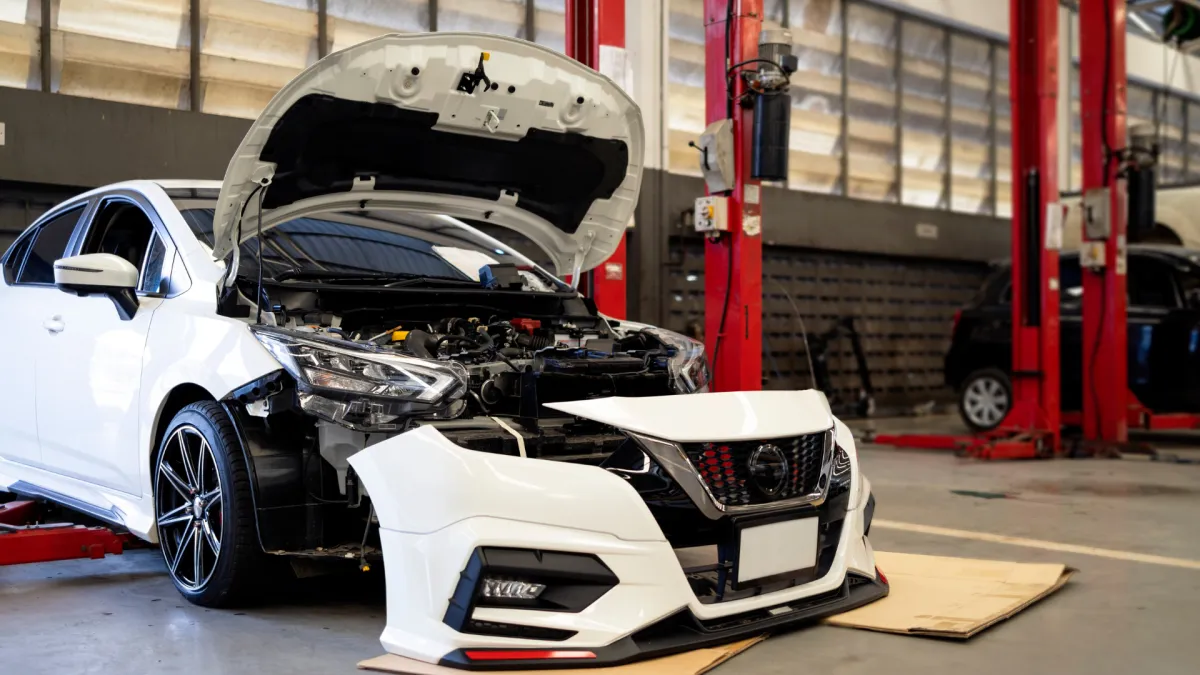BLOGS

Essential Engine Maintenance: Keep Your Car Running Smooth and Strong
Essential Engine Maintenance: Keep Your Car Running Smooth and Strong
Your car’s engine is the most critical component of your vehicle—it’s the powerhouse that keeps everything moving. Like the heart in your body, the engine requires regular attention and care to function efficiently. Without proper maintenance, performance drops, fuel efficiency decreases, and expensive repairs become inevitable. Whether you’re a seasoned DIYer or just beginning to learn about car care, understanding essential engine maintenance will help you keep your car running smoothly and reliably for years to come.
Why Engine Maintenance Matters
The engine is composed of many moving parts that work together under intense heat and pressure. Without routine upkeep, even minor issues can snowball into serious damage. Here’s why regular engine maintenance is crucial:
Extend Engine Life: Consistent maintenance helps reduce wear and tear, allowing your engine to perform at its best for many more miles than it would otherwise.
Improve Fuel Efficiency: A well-maintained engine runs more smoothly and uses fuel more efficiently, which means fewer trips to the gas station and more money in your pocket.
Prevent Major Breakdowns: Identifying and fixing small problems early can help you avoid sudden breakdowns and emergency repairs that leave you stranded or cost a fortune.
Protect Your Investment: A properly cared-for engine increases your vehicle’s resale value and provides peace of mind knowing your car is road-ready.
1. Regular Oil Changes
Why it’s important:
Engine oil serves multiple functions: it lubricates moving parts, minimizes friction, removes heat, and carries away dirt and metal particles. Over time, the oil degrades and becomes less effective at performing these crucial roles. Driving with old, dirty oil can cause the engine to overheat or wear out prematurely.
How often:
Most modern vehicles require oil changes every 5,000 to 7,500 miles, though some high-performance engines or synthetic oils may extend that to 10,000 miles. Always refer to your vehicle’s manual for the exact interval.
Pro tip:
Don’t just change the oil—make sure to replace the oil filter, too. A clean filter helps ensure the new oil stays clean longer and doesn’t recirculate contaminants through your engine.
2. Check and Replace the Engine Air Filter
Why it’s important:
The air filter is your engine’s first line of defense against dirt, dust, and debris. A clean air filter ensures a proper air-fuel mix, which is vital for combustion and performance. If the filter is clogged, it restricts airflow, leading to decreased acceleration, sluggish engine response, and reduced fuel efficiency.
How often:
Most filters should be inspected every 15,000 to 30,000 miles, or sooner if you drive on dusty or unpaved roads frequently.
Sign to replace:
You may notice poor acceleration, decreased power, or an increase in fuel consumption. A visibly dirty filter is also a clear sign it’s time for a change.
3. Monitor Engine Coolant
Why it’s important:
Coolant, or antifreeze, helps regulate your engine's temperature by absorbing excess heat and transferring it away from critical components. It also protects against corrosion inside the engine’s cooling system. Running low or using old coolant can lead to overheating and engine damage, which often results in expensive repairs.
How often:
Coolant should be checked every few months and flushed/replaced every 30,000 to 60,000 miles, depending on your car's specifications.
Tip:
Always check coolant levels when the engine is cool to avoid injury from hot, pressurized coolant. Use the correct coolant type recommended in your owner’s manual.
4. Inspect Belts and Hoses
Why it’s important:
Belts and hoses play an essential role in the proper operation of your engine. The serpentine belt drives various components such as the alternator, water pump, and power steering pump. Hoses carry coolant and other fluids to where they’re needed. Over time, they become brittle, cracked, or loose, leading to leaks or complete failure.
What to check for:
Look for signs of wear like fraying edges, cracks, glazing (a shiny surface), or bulging in hoses. Squeaking noises when the engine is running can also be a sign of belt wear or misalignment.
Replacement tip:
Most timing belts need replacement around 60,000 to 100,000 miles, while serpentine belts may last longer but should be inspected at every service interval.
5. Maintain Spark Plugs
Why it’s important:
Spark plugs ignite the air-fuel mixture inside your engine’s cylinders, creating the explosion that powers your vehicle. Worn-out or dirty spark plugs can result in engine misfires, poor acceleration, rough idling, and lower fuel efficiency.
When to replace:
Replacement intervals vary depending on your vehicle and spark plug type. Traditional copper plugs may need replacing every 30,000 miles, while platinum or iridium plugs can last up to 100,000 miles.
Pro tip:
When one spark plug goes bad, the others usually aren’t far behind. It’s generally best to replace all the plugs at the same time to ensure even performance across all cylinders.
6. Keep an Eye on Dashboard Warning Lights
Why it’s important:
Today’s vehicles come equipped with sophisticated sensors that monitor the engine’s health. Dashboard lights like the Check Engine Light, Oil Pressure Warning, or Engine Temperature Warning are not to be ignored. These alerts are often the first sign of underlying engine issues.
What to do:
If any warning light comes on, use an OBD-II scanner to read the code or take your car to a mechanic for a diagnostic check. Prompt attention can prevent small problems from becoming major repairs.
7. Use Quality Fuel and Additives
Why it’s important:
Using the correct fuel grade ensures your engine runs efficiently and prevents knocking, which can damage internal parts. Low-quality fuel can lead to carbon buildup, clogged fuel injectors, and reduced engine performance.
What to do:
Always use the recommended octane level stated in your owner’s manual. You can also occasionally use fuel system cleaners or additives to help clean injectors and improve combustion.
Bonus Tips for Long-Term Engine Health
Let the engine warm up in cold weather: Driving hard with a cold engine increases wear on moving parts. Give it a minute or two to warm up before hitting the road.
Avoid short trips whenever possible: Short drives don’t give the engine enough time to reach its optimal temperature, which can cause moisture buildup and sludge formation.
Stick to your vehicle’s service schedule: Following your manufacturer’s maintenance plan is one of the best ways to keep your engine in top shape.
Listen to your car: Unusual noises, vibrations, or reduced performance are early signs something may be wrong. Don’t ignore them—have them checked out promptly.
Final Thoughts
Maintaining your engine doesn’t have to be intimidating. By understanding these essential tasks and keeping up with your maintenance schedule, you’ll ensure that your engine stays strong, your car stays reliable, and your driving experience stays smooth. In the long run, these simple habits can save you thousands in repairs and keep your vehicle running like new if you need professional advice Visit us on Automed Car Care at Calvar City.





